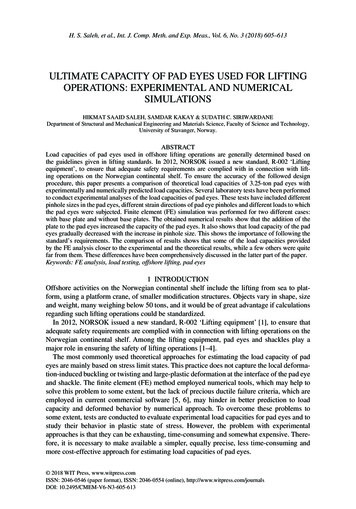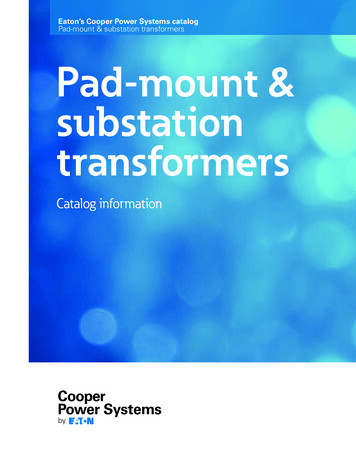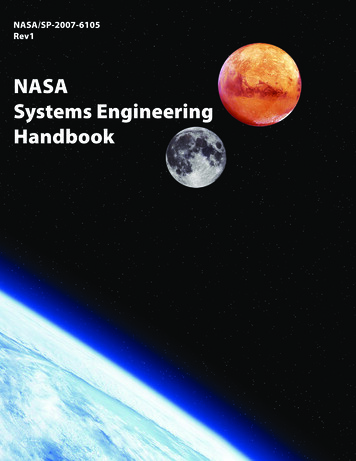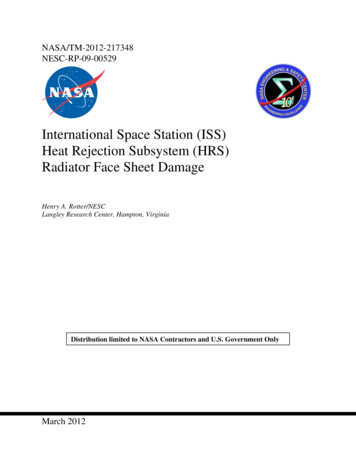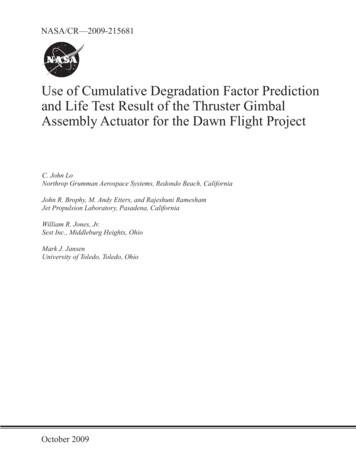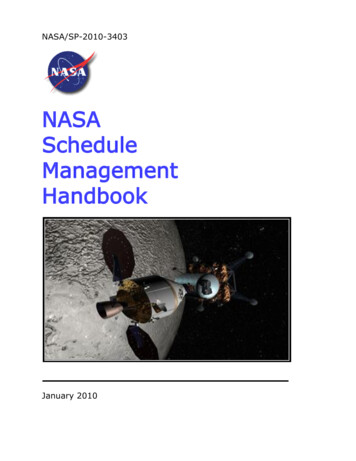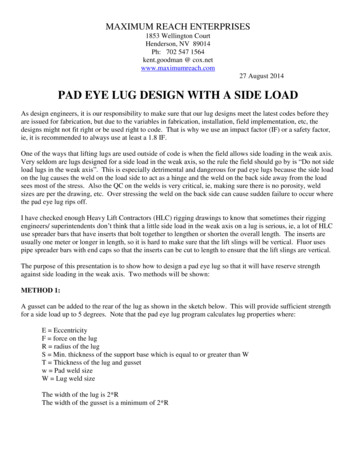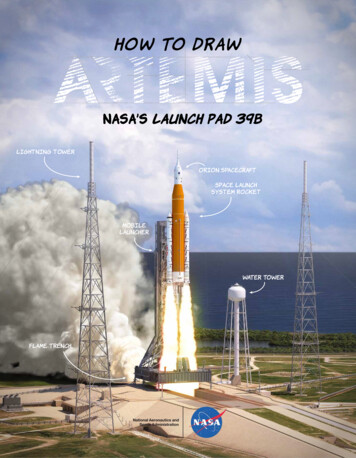
Transcription
NASA’s launch pad 39Blightning towerORION SPACECRAFTSpace LaunchSystem rocketMobileLauncherWATER TOWERFlame Trench
WE ARE GOING!From this launchpad, NASA willLAUNCH the firstwoman and next manTO the Moon by2024, usinginnovativetechnologies toexplore more ofthe lunar surfacethan ever before.learn more:nasa.gov/artemisTHE SPACE LAUNCH SYSTEMWorld’s MOST POWERFUL ROCKEtTHE GATEWAYOUTPOST ORBITING THE MOONARTEMIS GENERATIONSPACE SUITSORION SPACECRAFTDesigned for deep space
1.getting someperspective.Let’s set the scene. Lightly draw ortrace the blue lines here with a rulerin pencil. this will provide a goodperspective frame for your drawing.SUPPLY LIST1. PENCIL WITH ERASER2. bLACK PEN OR MARKER3. Ruler4. SHEET OF PAPERDRAW THESE LINESUSING A pencilExploration Ground Systems (EGS)has made significant upgrades andenhancements to Launch Pad 39B tosupport NASA’s Artemis missions tothe Moon and deep spacedestinations including Mars.During refurbishment projects,1.3 million feet of copper cableswere removed and replaced with300,000 feet of fiber cable.
2.draw your firstStructure linesDraw the first lines for thelightning towers, watertower, mobile launcher andspace launch system (SLS).the current shapes to be drawnare always shown in red.DRAW New Red SHAPESUSING A pencilThe three lightning towers areabout 600 feet tall – tallerthan the Vehicle AssemblyBuilding, which is 525 feet tall.Apollo 10 was the first missionto begin at Launch Pad 39Bwhen it lifted off May 18, 1969, torehearse the first Moon landing.
3.Add SLS Boosters andmore details to towersFill in black linesUSING A BLACK PENDRAW New Red SHAPESUSING A pencilThe water tower for the IgnitionOverpressure and Sound Suppression System(IOP/SS) holds roughly 400,000 gallons ofwater, or enough to fill 27 average pools.The water is dumped on the mobile launcherand inside the flame trench in less than 30seconds.The IOP/SS peak flow rate is 1.1 milliongallons per minute, high enough toempty roughly two Olympic-sizeswimming pools in one minute!
4.Finish the pad andlaunch your SLS!Fill in black linesUSING A BLACK PENDRAW New Red SHAPESUSING A pencilThe refurbished flame trenchand new flame deflector willbe exposed to a peaktemperature of 2,200 degreesFahrenheit during launch.In this photo, showing the reverseangle of the drawing, The flame trenchand flame deflector can be seen.More than 96,000 bricks wereinstalled on the walls of theflame trench during therefurbishment project.
5.finalize your black lines anderase remaining blue linesFill in black linesUSING A BLACK PENERASE THEremaining pencilLINES (in blue)engineers and technicians areplanning to do almost all of theirpreparations inside the VehicleAssembly Building (VAB) before thelauncher goes to the pad. Thisminimizes the amount of time thevehicle is exposed to the elementson the launch pad prior to liftoff.Liquid oxygen and liquidhydrogen tanks storesuper-cooled propellants atminus 297 and minus 423 degreesFahrenheit, respectively.
6.FINISH ANDSHARE!Fill in your SLS and PAD SUrfacecolors, add some shading andfinish with the Atlantic Oceanand horizon in back!Make it your own! Try a nightlaunch with the moon and stars!Don’t forget to share yourmasterpiece on social media!#DRAWARTEMIS
in pencil. this will provide a good perspective frame for your drawing. SUPPLY LIST 1. PENCIL WITH ERASER 2. bLACK PEN OR MARKER 3. Ruler 4. SHEET OF PAPER DRAW THESE LINES USING A pencil Exploration Ground Systems (EGS) has made significant upgrades and enhancements to Launch Pad 39B to support


